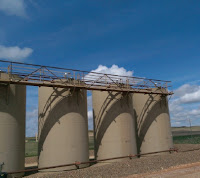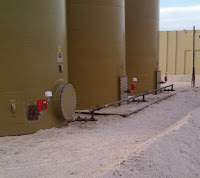An educational blog sponsored by Classic Controls focusing on education and training for the process control, instrumentation, and industrial valve community.
Happy Holidays from Classic Controls
All of us at Classic Controls wish our customers, partners, vendors and friends a very Happy Holiday Season and a wonderful 2019!
Wireless Remote Monitoring and Control Systems Offers Cost Effective Solution for Tank Level Monitoring System
APPLICATION:
When a chemical plant wanted to add level and temperature monitoring to a set of tanks on the edge of their property, the initial proposition was to run a HART cable from the control room to the tank site and, then, branch out to each tank and wire in the level and temperature sensors. The wire length would be several thousand feet between the two points and, then, more to wire sensors to each tank.
PRODUCT SUPPLIED:
CHALLENGE:
The cost and time associated with this wiring effort, however, was found to be enormous. In addition to the cost of expensive wire, trenching and running conduit was another large added cost. The proposed budget for this upgrade was close to $100K for just the connection costs.
SOLUTION:
Taking a more cost effective route, the chemical plant decided to use a wireless solution offered by Signal Fire remote monitoring products. Multi-drop HART wireless nodes were installed on the top of each tank and connected – locally – to the sensors associated with each tank. (Nodes serve as the wireless, long-distance communication link in the remote monitoring and control of assets such as tank levels. The nodes extract then transmit data from sensors via a wireless mesh network to a Gateway where data is available via a Modbus RTU or TCP interface.) The total cost of the equipment and installation was a small fraction of the cost of running cable alone and the start-up time was a few hours as opposed to weeks. Additionally, because it was so easy to add additional wireless measurement points, other monitoring points can be easily added to the network in the future.
Reprinted with permission from SignalFire.
When a chemical plant wanted to add level and temperature monitoring to a set of tanks on the edge of their property, the initial proposition was to run a HART cable from the control room to the tank site and, then, branch out to each tank and wire in the level and temperature sensors. The wire length would be several thousand feet between the two points and, then, more to wire sensors to each tank.
PRODUCT SUPPLIED:

CHALLENGE:
The cost and time associated with this wiring effort, however, was found to be enormous. In addition to the cost of expensive wire, trenching and running conduit was another large added cost. The proposed budget for this upgrade was close to $100K for just the connection costs.
SOLUTION:
Taking a more cost effective route, the chemical plant decided to use a wireless solution offered by Signal Fire remote monitoring products. Multi-drop HART wireless nodes were installed on the top of each tank and connected – locally – to the sensors associated with each tank. (Nodes serve as the wireless, long-distance communication link in the remote monitoring and control of assets such as tank levels. The nodes extract then transmit data from sensors via a wireless mesh network to a Gateway where data is available via a Modbus RTU or TCP interface.) The total cost of the equipment and installation was a small fraction of the cost of running cable alone and the start-up time was a few hours as opposed to weeks. Additionally, because it was so easy to add additional wireless measurement points, other monitoring points can be easily added to the network in the future.
Reprinted with permission from SignalFire.
Tunable Diode Laser Spectrometers Improve Combustion and Heating Process Performance
 |
| Yokogawa TDLS 8000 |
The implementation of a process instrument called a "tunable diode laser spectrometer" (TDLS) gives plant operators an excellent advantage in the management of combustion gases.
 |
| Yokogawa TDLS 220 |
Tunable diode laser spectrometers non-contact sensors are are optimal for use in corrosive, abrasive and condensing applications in the oil, petrochemical, electric power, iron and steel, and other industries.
For more information on tunable diode laser spectrometers, contact Classic Controls by calling 863-644-3642 or visit https://classiccontrols.com.
Labels:
Caribbean,
Florida,
Puerto Rico,
TDLS220,
TDLS8000,
tunable diode laser,
Yokogawa
Subscribe to:
Posts (Atom)



